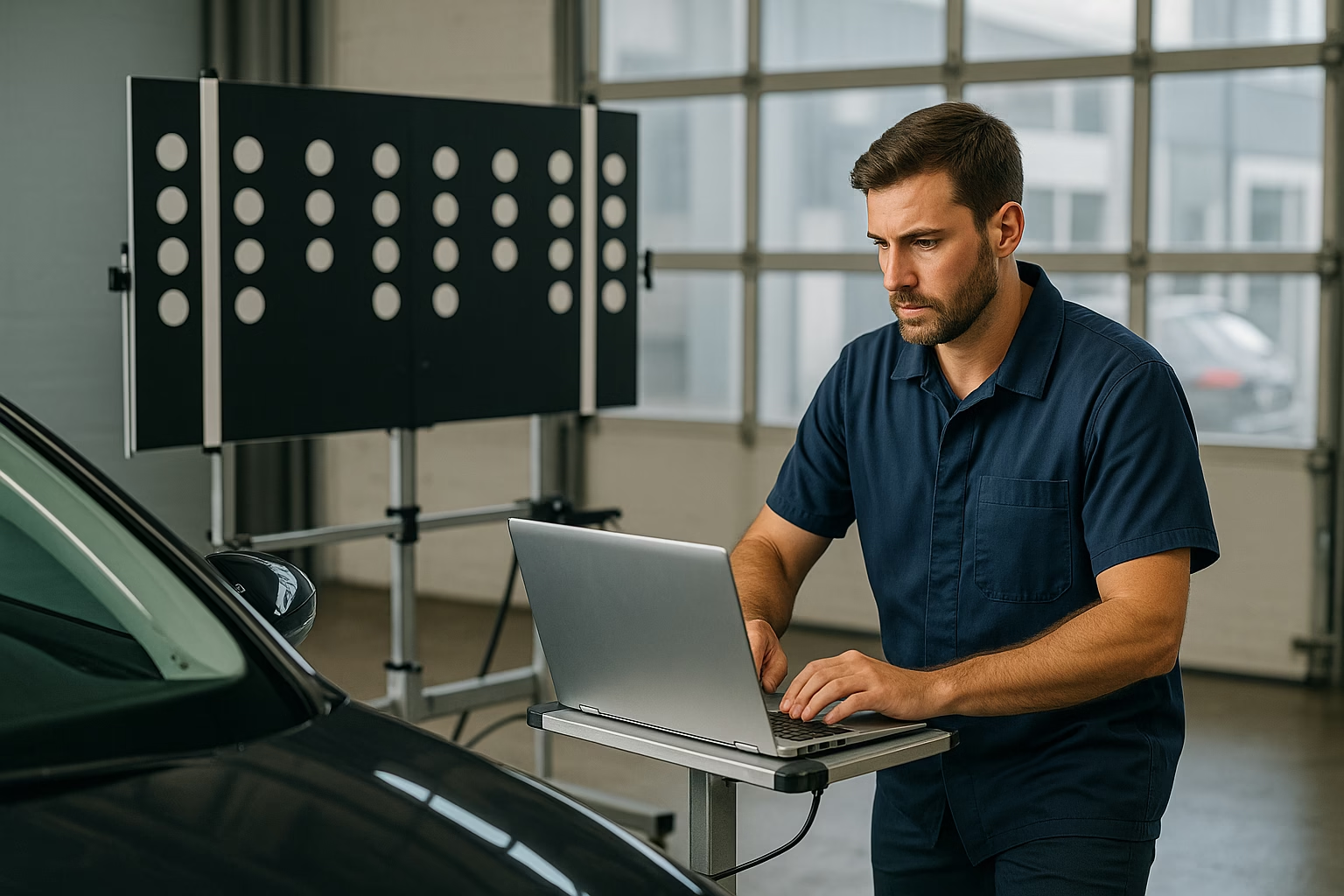Modern cars rely on radar, cameras, and sensors to help keep you safe. But these systems only work if they are properly calibrated. If something feels off or if a light pops up after a repair, your car might be due for a recalibration.
Here is how to tell when it is needed and why it matters.
What Is Calibration?
Calibration is the process of making sure your car’s ADAS sensors are aiming and functioning correctly. A few millimetres of change can affect how your car:
- Brakes in an emergency
- Stays in its lane
- Measures the distance to the car in front
- Detects blind spots or traffic crossing behind
If these systems are not aligned, they can give false readings or fail to activate when you need them most.
When Calibration Is Needed
Calibration is usually required after:
- Windscreen replacement (if there is a front-facing camera)
- Front or rear bumper repair or replacement
- Suspension, steering, or wheel alignment work
- Airbag deployment
- Collision repairs, even low-speed ones
- Replacing ADAS sensors or control modules
If your car has recently had any of these done, it is worth checking if calibration was completed.
Signs Your Car Might Be Out of Calibration
Here are some clues:
- Lane Assist or cruise control no longer activates
- AEB brakes too early or not at all
- Blind spot alerts seem delayed or erratic
- Dashboard shows ADAS warnings or icons
- You feel the car is reacting differently in traffic
Sometimes there are no clear signs until the system fails when you need it. That is why proactive checks matter.
How Calibration Is Done
Calibration must be done using specialist equipment. There are two types:
Static calibration – done in a workshop using alignment targets
Dynamic calibration – done by driving the vehicle under specific conditions
Some cars need both. The process can take from 30 minutes to a few hours depending on the system and brand.
Where to Get It Checked
Dealerships and ADAS-certified workshops can perform calibrations. Not all panel beaters or glass shops offer this service, so always ask.
Before booking:
Confirm they have the right tools for your make and model
Ask if they include pre- and post-scan reports
Request documentation to show calibration was completed
Final Tip
If your car feels different after a repair or warning lights appear, do not ignore it. ADAS calibration is not just a tech issue. It is a safety issue.
A quick check today can prevent a serious mistake tomorrow.
For more plain‑English guides and FAQs, explore our Driver’s Lounge.

Hiran Alwis is an automotive lecturer and ADAS specialist with over 15 years of experience in diagnostics, advanced safety systems, and technical training. He founded ADAS Project to help everyday drivers and workshop technicians understand and safely use advanced driver assistance systems.
